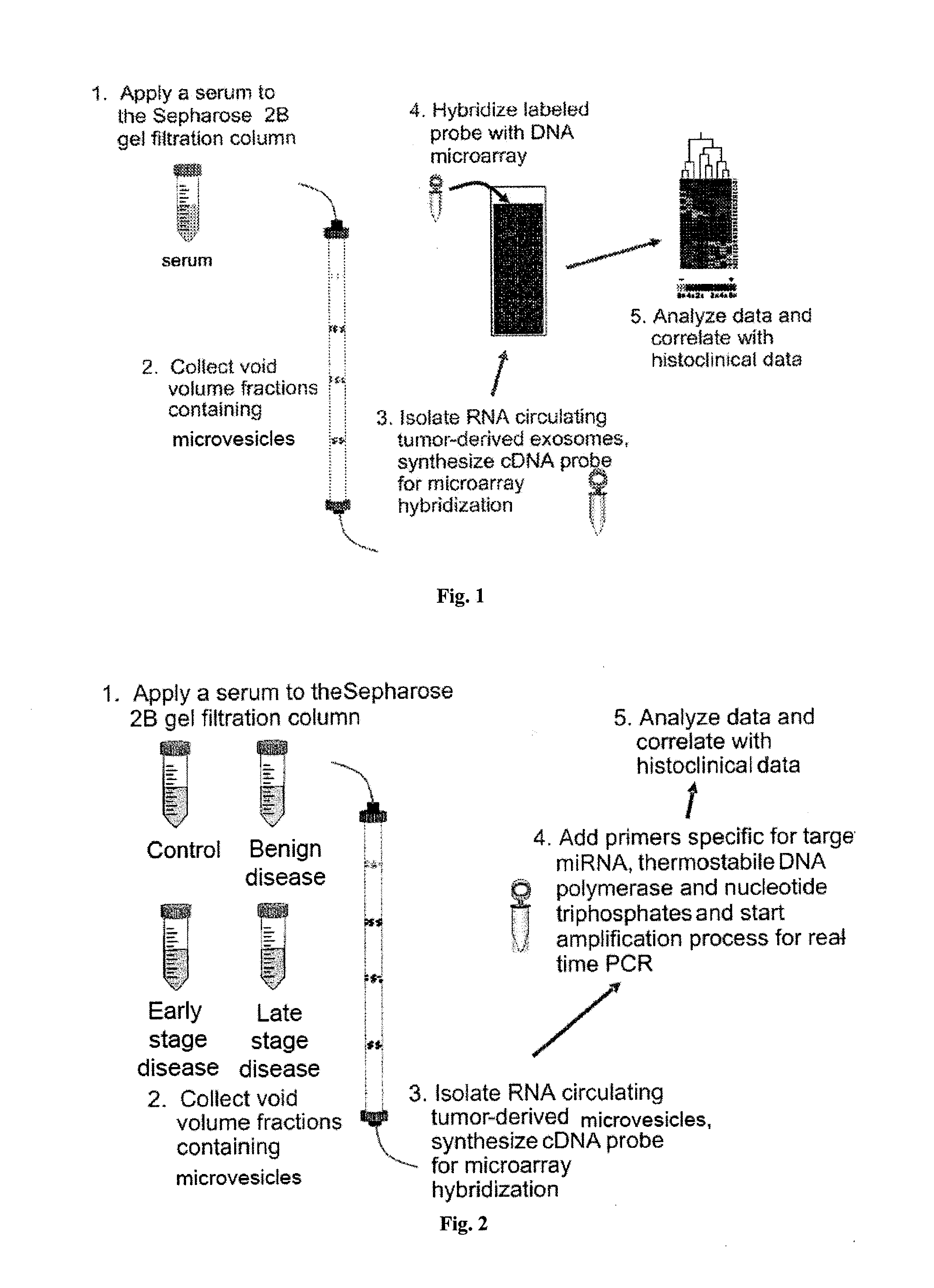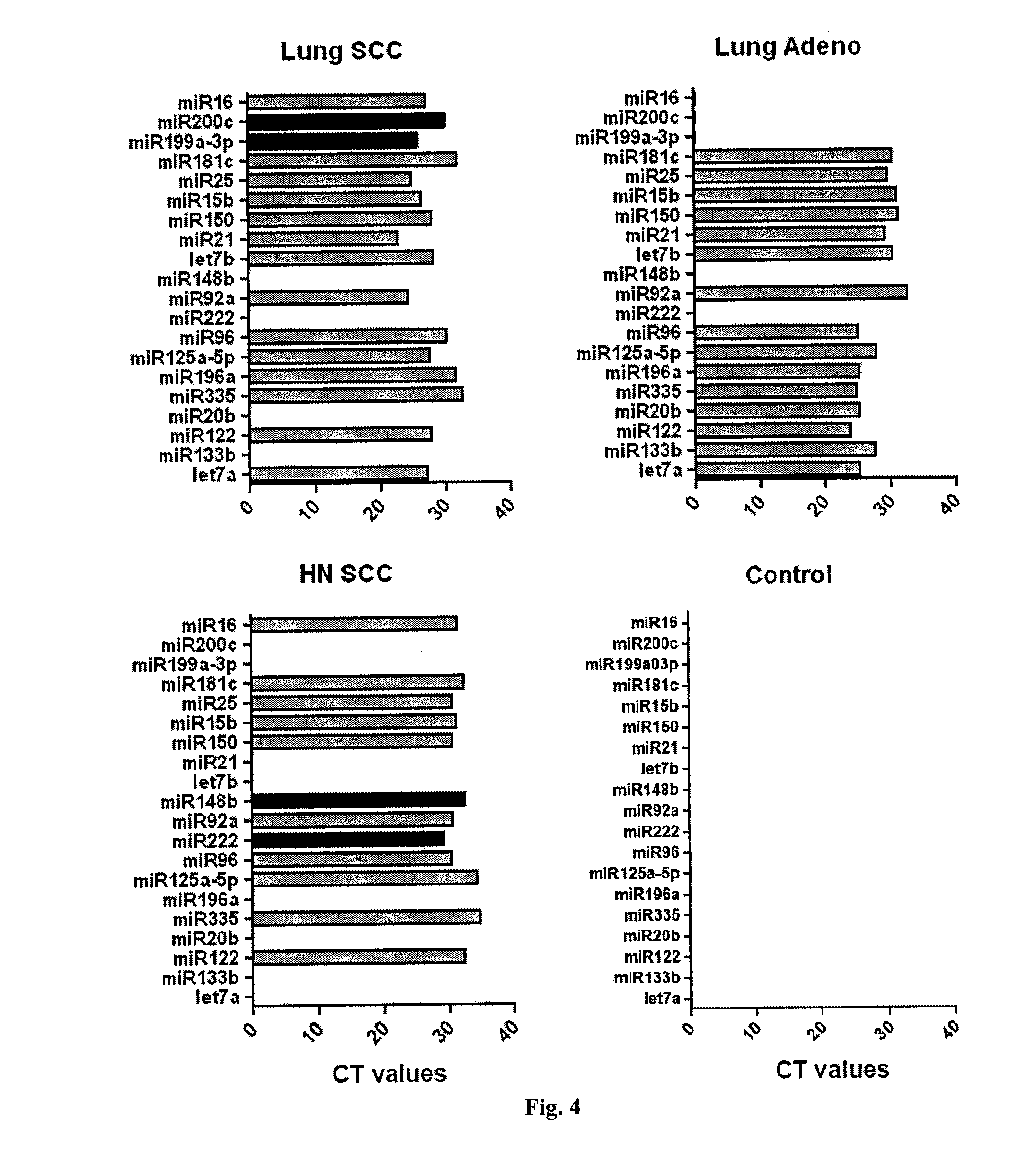Microrna biomarkers
a microrna biomarker and microRNA technology, applied in biochemistry equipment and processes, instruments, library screening, etc., can solve the problems of reducing prognosis, few reliable and cost-effective screening tests, and up to 50% of head and neck cancer patients presenting advanced diseas
- Summary
- Abstract
- Description
- Claims
- Application Information
AI Technical Summary
Benefits of technology
Problems solved by technology
Method used
Image
Examples
example 1
Materials and Methods
[0115]The following techniques are used to carry out the methods of the present invention.
[0116]Isolation of Circulating Vesicles
[0117]Microvesicles in a biological sample such as serum can be isolated using methods known in the art and / or disclosed herein, including centrifugation, PEG-precipitation or chromatographic isolation. See, e.g., isolation methods described in United States Patent Publication US 2010 / 0151480 A1, entitled “Exosome-associated MicroRNA as a Diagnostic Marker” and published on Jun. 17, 2000; and Taylor et al., “Chapter 15: Exosome Isolation for Proteomic Analyses and RNA Profiling,” in Richard J. Simpson and David W. Greening (eds.), Serum / Plasma Proteomics: Methods and Protocols, Methods in Molecular Biology, vol. 728, pp 235-246, © Springer Science+Business Media, LLC 2011, which publications are incorporated by reference herein in their entirety.
[0118]To isolate microvesicles by ultracentrifugation, the biological fluid (2 ml) is centr...
example 2
Microvesicle-miRNA Profiles in Squamous Cell Carcinoma and Adenocarcinoma
[0131]Predicting individual responses of cancer to treatment remain challenging, and diverging clinical courses of same cancer stage remain obscure. Better methods of defining cancer are needed. In this Example, blood-borne miRNA was reported to identify head and neck squamous cell carcinoma (HNSCC), lung SCC, lung adenoma and to predict outcome.
[0132]Heparinized blood samples were obtained from patients diagnosed with HNSCC (n=32) at the time of initial treatment and serial samples were also obtained during clinical follow-up, under an IRB approved protocol. Samples were also obtained from normal (i.e., non-cancer) patients, and patients with diagnosed lung SCC and lung adenocarcinoma. The blood samples were centrifuged at 400×g for 10 minutes to separate remove cells. The plasma was then centrifuged at 15,000×g for 20 minutes to remove cell debris. Circulating microvesicles were isolated by chromatography, fo...
PUM
| Property | Measurement | Unit |
|---|---|---|
| diameter | aaaaa | aaaaa |
| temperatures | aaaaa | aaaaa |
| temperatures | aaaaa | aaaaa |
Abstract
Description
Claims
Application Information
 Login to View More
Login to View More - R&D
- Intellectual Property
- Life Sciences
- Materials
- Tech Scout
- Unparalleled Data Quality
- Higher Quality Content
- 60% Fewer Hallucinations
Browse by: Latest US Patents, China's latest patents, Technical Efficacy Thesaurus, Application Domain, Technology Topic, Popular Technical Reports.
© 2025 PatSnap. All rights reserved.Legal|Privacy policy|Modern Slavery Act Transparency Statement|Sitemap|About US| Contact US: help@patsnap.com



